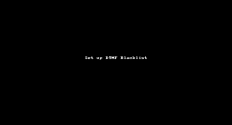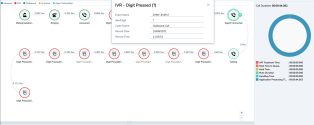Set up DTMF blacklist
As an 8x8 Contact Center administrator, you can now manage your DTMF blacklist by adding, editing, and deleting phone numbers as well as SIP URIs. The DTMF blacklist serves a critical function: it stops recording a call once connected to a blacklisted destination. This feature is essential for maintaining privacy, as it also masks any key presses during the customer experience.
Features
- Puts the customers in charge of their own DTMF blacklist needs.
- Accelerates the process of adding a new entry to the DTMF blacklist.
- Covers various call routing and looping scenarios to make sure that all recordings stop, and the key presses are masked when connected to the blacklisted number.
- Improves the speed of blacklist entry identification by making the detection within the call routing process.
Add phone numbers to the blacklist
8x8 Contact Center administrators can now add numbers to the DTMF blacklist via 8x8 Configuration Manager and the new tab on the Security page.
To add a phone number to the blacklist
- Log in to 8x8 Configuration Manager.
- Go to Security > DTMF Blacklist tab.
- Click Add blacklist entry.
-
Add a Telephone number or a SIP URI. The entries will be added to the blacklist. The telephone number is validated against E.164 format, such as +14151231234 for the US or +442071838750 for the UK. A message notifies you if the format is wrong before you save.
Notes:
- There is no validation for SIP URI.
- You cannot update a saved entry. To change an existing entry you must remove it first then add the revised entry. - Add a Comment to describe the entry. It can be up to 256 characters long. You can update the comment later.
- Save your changes. The entry is added to the blacklist.
- To edit the comment only, click Edit next to the entry.
- To delete the entry, click Delete next to the entry and Confirm.

Changes in 8x8 Customer Experience Call Flow
With the ability to blacklist DTMF, any key presses captured during the call flow are masked and represented by (?) in the 8x8 Customer Experience call flow. This is a change of behavior from our previous release where the numbers were masked by showing (#).
